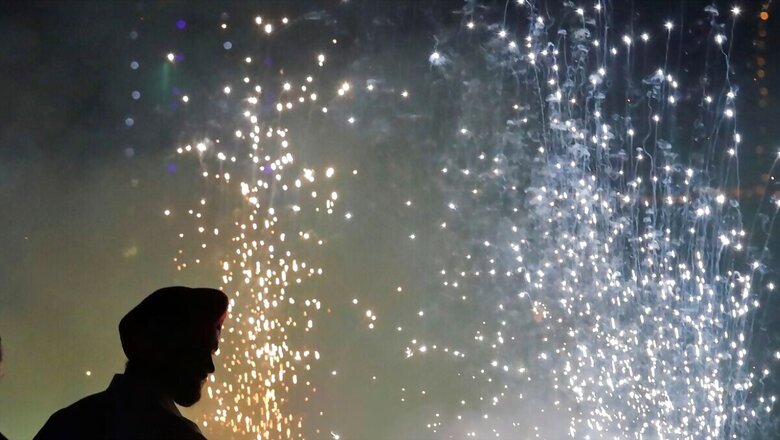
views
Despite the favourable impact of rain, air pollution across the national capital quickly escalated to hazardous levels on Diwali night turning the air noxious yet again. The PM2.5 levels breached the safe limits and showed an increasing trend on Monday.
After a brief respite over the weekend, a layer of toxic smog blanketed the region, reducing the visibility significantly. The 24-hour average AQI as monitored by the Central Pollution Control Board (CPCB) was recorded to be around 358 for Delhi, Noida, and Gurugram at 4pm on Monday. However, the real-time indices showed it had already breached the 400 (severe) mark in several places during the day.
According to the air quality monitoring system SAFAR – the AQI, which measures the level of fine particulate matter in the air, hovered around 435 for Delhi on Monday. The PM10 value was recorded to be 395 and PM2.5 was 285 at 5pm, way beyond the prescribed standards, 100 µg/m3 for PM10 and 60 µg/m3 for PM2.5.
PM10 and PM2.5 are among the many pollutants present in the air. But what makes these particles dangerous is that they have a diameter of less than 10 microns, which means they can be easily inhaled deep into the respiratory tract and the lungs where they can induce adverse health effects. Prolonged exposure to these particles can trigger not just respiratory issues but also worsen pre-existing heart and lung functions in many individuals.
PM2.5 levels peak at midnight
According to NCAP Tracker, a joint project by Climate Trends and Respirer Living Sciences, the national capital recorded a PM2.5 average of 395.9 ug/m3 from midnight to 12 noon on Monday. In fact, it was the highest among all the 11 cities analysed, including Mumbai, Bengaluru, Bhopal, Chandigarh, Chennai, Delhi, Gandhinagar, Hyderabad, Lucknow, Mumbai, and Patna, which also saw PM2.5 levels peak between midnight and 1.30am on Diwali night.
The highest spike (recorded at 15-minute intervals) was seen at the air quality monitoring station at Pusa at 1.30am, which was recorded to be 999.5 ug/m3. “A Supreme Court ban on bursting firecrackers in Delhi-NCR was flouted fully. Our data shows that the widespread bursting of crackers took away gains that were made due to the rains. While these are spikes that last only for a few hours or days, such high levels of air pollution add up to the exposure burden on human health, which is already high in Indian cities,” said Aarti Khosla, director, Climate Trends.
Negligible smoke intrusion from outside, local emissions peak
While a spike in stubble burning was attributed to be the main driver for severe AQI in Delhi during the first week of November, its contribution to air pollution in Delhi has plummeted to around 5% over the last two days. However, local emissions peaked mainly caused by the burning of firecrackers which continued despite the ban.
“The rain had significantly washed down the pollutants that had choked Delhi for almost a week. The AQI had also improved significantly. However, it began to deteriorate rapidly at 8pm on Sunday night due to local sources. Within hours, the air quality turned ‘very poor’ and eventually ‘severe’ in some places,” said Professor Gufran Beig, founder and project director of air quality monitoring system SAFAR.
Worse days ahead?
According to the CPCB, no respite is expected over the next few days, and the pollution levels are likely to deteriorate. The forecast suggests the Air Quality Index is likely to hover around ‘very poor’ to ‘severe’ levels over the next few days. The predominant surface winds also remain calm and low night temperatures are leading to mist or shallow fog in the early hours. “If the weather conditions are unfavourable, the emissions from human activities will build up locally leading to dangerously high concentrations,” says Dr R Subramanian, sector head, Air Quality, at Center for Study of Science, Technology and Policy (C-STEP).
An Air Quality Life Index (AQLI) prepared by the University of Chicago last year found that people in India are expected to lose about five years of their lives on average if the current high levels of pollution persist. The analysis based on new and revised satellite-derived PM2.5 data from all countries in the world concluded that India faces the highest health burden of air pollution due to its high particulate matter concentrations and large population.




















Comments
0 comment